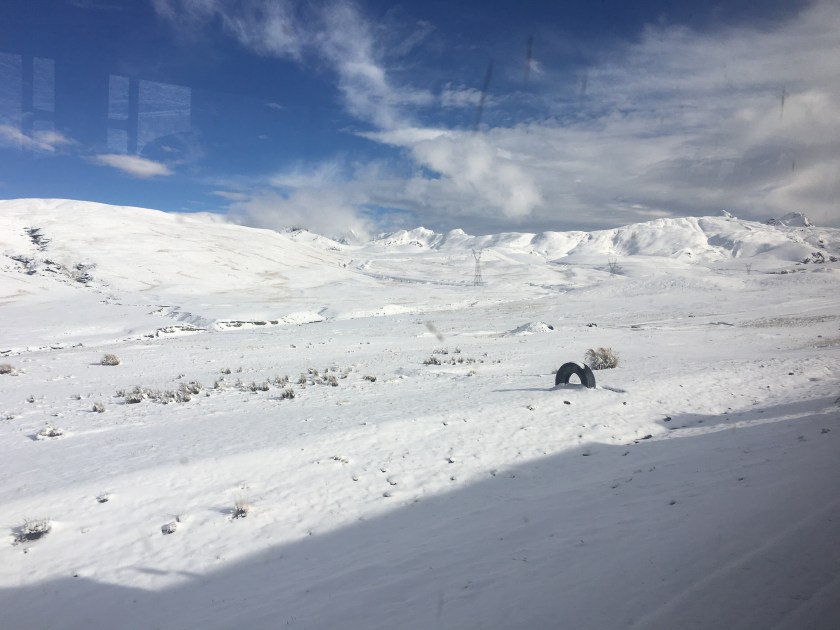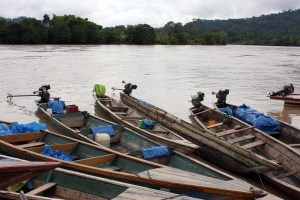I certainly hadn’t planned on being in Bariloche for more than a month, but then, some of the best experiences of my travels have been unplanned. While most people can’t say that they’ve had some of their best experiences during these last few months, I have been so fortunate to be in great company in one of the most beautiful places on earth – a place that truly feels like home.
During my extended stay here, I have gotten the opportunity to explore one little nook of this beautiful corner of the world on a more personal level.
Thanks to my brilliant and fun roommate, host, and friend (Tomás), I found “home” in a safe, comfortable, eco-friendly, and gorgeous place, surrounded by good people.
Tomás has been my trail guide, my belay (while rock climbing and in life in general), slack line guru, the guitar and trombone in our 2-person house band (not sure what my role is…I guess back-up vocals), and really great company during 30+ days of lock-down.

Tomás has succeeded in (and shared with me) living a comfortable life connected to nature – close to great hikes, buying vegetables from the local vegetable vendors, eating greens from the garden, composting organic waste, and generating such a small amount of trash that we first took out the trash (a small bag) after I had been there nearly a month.
Taking turns cooking we shared vegetarian recipes and I learned a few secrets like how to cook dry beans and the magic of beer yeast as a condiment. I shared a couple of tricks I had learned in Peru (the amazing “ensalada rusa” and the power of adding ginger to a stir fry), and I almost …almost… got to a point where I enjoyed cooking.
Here, the backyard is a natural playground. There is the stream that you have to cross, hopping from rock to rock, carefully choosing your path so you don’t get stranded in the middle or foolishly land on a loose or slippery rock that pitches you into the water.

Crossing the stream opens up a whole new world. You can wander through trails parallel to the rising hills and rock faces in the south and ultimately find yourself on the lakeshore. Meandering along the lakeshore, you see where the stream you crossed earlier empties into the lake.

The beauty and serenity of the lake is like no other. Some times there is a strong wind that nearly blows you over and creates ocean-like waves on the lake. Other times, there is no wind and the lake is as still as glass.

Heading towards the mountain-like hills to the south is a network of trails that meander through the forest and hills. There are hidden waterfalls, rock faces for climbing, and trails taking you up to the peaks of the hills.

 As you climb, every now and then you are rewarded with indescribable views of the lakes below.
As you climb, every now and then you are rewarded with indescribable views of the lakes below.



Walking through the forest there is a constant background sound of buzzing. At first I thought I was crazy but later I realized that it was the sound of yellow jackets. I saw a few buzzing around when we stopped in a clearing to rest on a log and do acro-yoga, looking out over the lake. But mostly they stay hidden and are heard but not seen, swarming in the trees. Except for that time that one stung me in the foot.* And that other time that one stung Tomás. A small price to pay for a beautiful day outdoors.
One spiny and annoying bush grabbed my attention (and my pants leg) ever since my first hike in the area. It has a strange pear-apple-shaped red fruit that has nothing but seeds inside. I learned that this is the Rosa Mosqueta. An invasive weed that is really hard to get rid of.

One day my roommate and I had the bright idea to harvest the fruit and make tea. It turned out to be the best tea I’ve ever had in my life – and I’m not exaggerating! As it boiled, it put off an intense sugary sweet smell and the tea had a delicious apple-cinnamon flavor.

Speaking of harvesting fruits…you can find apple trees to provide an afternoon snack on the hike (or a week’s worth of delicious apple treats if you get serious about harvesting them).

Sometimes, walking through the forest, I smell Christmas trees. Though the pines are an invasive species here, the smell is lovely. Riding a borrowed bicycle through neighborhoods towards the main road, there are two spots where I smell that delightful smell of eucalyptus – one of my favorite smells in the world (but also an invasive). (Makes me wonder: Do all invasive trees have good smells?)
Speaking of the trees, the old Coihues are the best (and native, not invasive!) When we stumbled across a great Coihue towering above us, it felt like a guardian tree that could protect us from anything. It took three and a half people to hug that tree all the way around.


Then there are the cypress. Huge cypress trees tower above, painting the sky with a deep green on a deep blue sky backdrop. The hilltops are full of cypress, giving their rocky faces a green coat.
I’m not sure which trees change their colors in the autumn, but I was lucky enough to watch the hilltops change colors from pure green to a burnt-orange and red tint as autumn creeped in.


The trails in this area have provided a unique life lesson. My first time going for a trail run, I was filled with a mixture of nervousness about getting lost, but at the same time a sense of adventure, ready to explore my new “backyard”.
Within the first hundred meters, the trail divided into three forks and I had to choose which way to go. Shortly thereafter, it divided again. I took note of my choices so I could trace my way back and try the other options if I got lost or stuck. But the trail continued to divide, two and three and sometimes four forks every few hundred meters, like a maze, presenting me with countless choose-your-own-adventure-like decisions. With so many forks along the way, I quickly lost track.
Some trails were narrower and I did a lot of ducking under low-hanging trees and bushes while others were wide open rocky trails, and I even encountered a road-like trail that seemed accessible for vehicles. A few times I passed through clearings that had been used as campsites, evidenced by the fire rings. And sometimes the trail spit me out along the stream bank. With the stream as a reference point, I knew I couldn’t get completely lost because I could always follow the stream back to the point behind my house.
As I continued to somewhat randomly choose my path forward at every fork, I realized that there seemed to be a great web of trails, most of them probably all connected eventually in some way. As long as I kept the stream on my right and headed away from the setting sun, I would be able to find my way. Sometimes I had to cut through some heavy brush, and sometimes I decided to retrace my steps and find a cleaner trail or to take a more scenic trail, but I was no longer worried about going in the “wrong direction”.

Famous Footnotes:
*That was my first time being stung by any type of wasp or bee. I couldn’t believe how much it felt like stepping on a nail. I’ve never stepped on a nail either, but I imagine that’s what it feels like. But it was a small price to pay for a beautiful day outdoors.








 In less than 24 hours I was so lucky to get a taste of this great little town and not just peek into the lives of some of the locals, but actually feel a part of it.
In less than 24 hours I was so lucky to get a taste of this great little town and not just peek into the lives of some of the locals, but actually feel a part of it.



 Además me impresionó que había bebederos – fuentes de agua potable – en el aeropuerto. Varias ciudades han logrado de abastecer agua potable a sus poblaciones y yo podía tomar agua del caño (“del grifo”, “de la llave”) sin preocupación.
Además me impresionó que había bebederos – fuentes de agua potable – en el aeropuerto. Varias ciudades han logrado de abastecer agua potable a sus poblaciones y yo podía tomar agua del caño (“del grifo”, “de la llave”) sin preocupación.








































 The food is carefully collected from the earthen oven.
The food is carefully collected from the earthen oven.


































